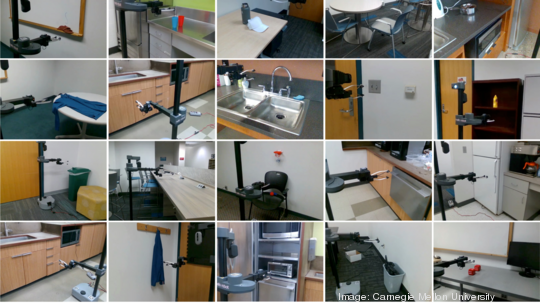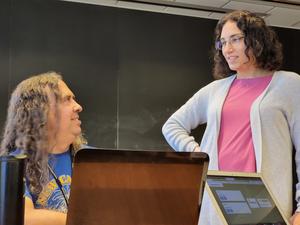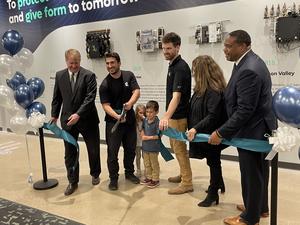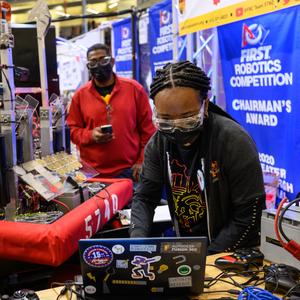
Household chores, one of the great banes of domestic living, might someday soon get a little easier to accomplish following advances made by Carnegie Mellon University researchers who have developed a new way to teach robots how to do them instead.
Shikhar Bahl, a doctoral student at the Robotics Institute at CMU's School of Computer Science, worked alongside CMU faculty members Deepak Pathak and Abhinav Gupta to develop a new learning method for robots called In-the-Wild Human Imitating Robot Learning, or WHIRL for short.
In essence, the method relies on a robot first watching a human perform a task — like opening and closing appliances or taking a trash bag out of the garbage — before it then begins to replicate that task on its own, which can take only a few hours to master after a period of trial and error. At a more technical level, the team created software and an algorithm that, combined with a camera, was applied to an off-the-shelf robot that then learned how to do 20 tasks after it saw a human perform them.
"Imitation is a great way to learn," Bahl said in a post highlighting the feat. "Having robots actually learn from directly watching humans remains an unsolved problem in the field, but this work takes a significant step in enabling that ability."
The researchers tout WHIRL as being much easier to scale and implement compared to current imitation- or reinforcement-based learning for robots.
In fact, the use of WHIRL doesn't even require a live demonstration from a human for it to work; the researchers claim that most videos given to a WHIRL-equipped robot of a human performing a task will suffice, not just those the robot records from its supplied camera. Additionally, the team is working on a model of WHIRL that will be trained by watching videos found on YouTube or Flickr of humans performing tasks.
"This work presents a way to bring robots into the home," Pathak, who is also an assistant professor in the Robotics Institute, said in a prepared statement. "Instead of waiting for robots to be programmed or trained to successfully complete different tasks before deploying them into people's homes, this technology allows us to deploy the robots and have them learn how to complete tasks, all the while adapting to their environments and improving solely by watching."
The team presented their research at the Robotics: Science and Systems conference in New York, which was held from June 27 through July 1.









